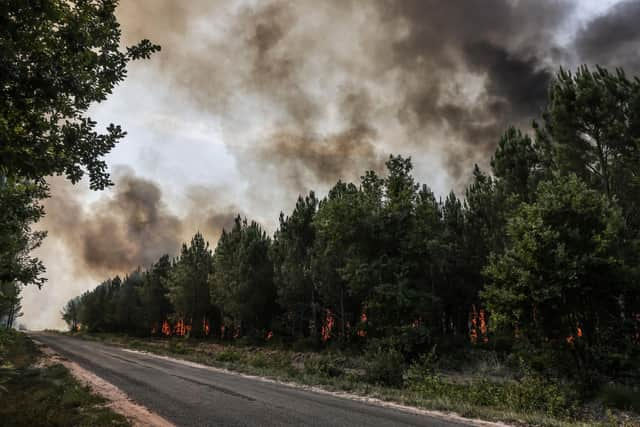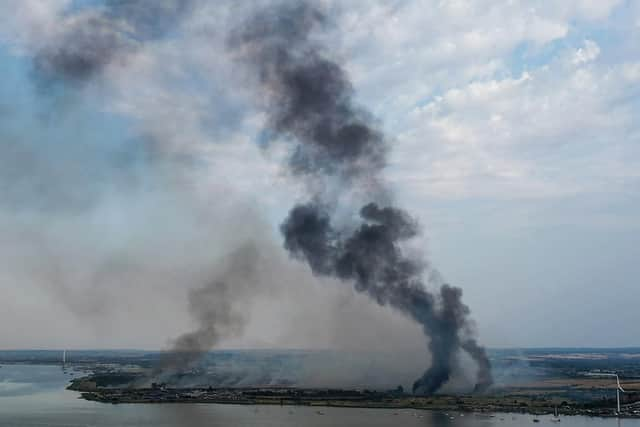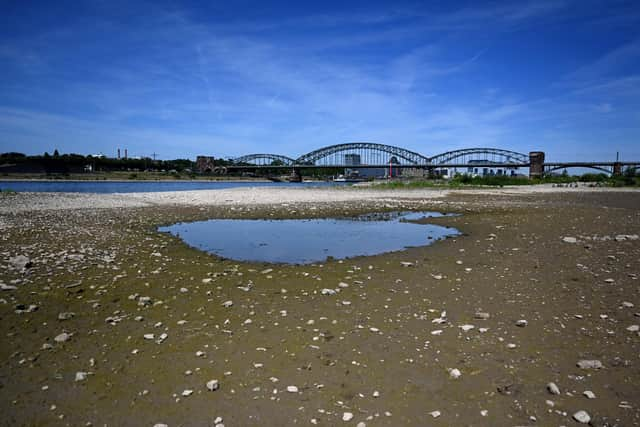Climate change: Humanity is on a suicidal joyride to hothouse Earth – Professor Bill McGuire
This article contains affiliate links. We may earn a small commission on items purchased through this article, but that does not affect our editorial judgement.
The clincher was the unveiling of a mocked-up Met Office weather map, made a few years back for the year 2050, which proved to be the twin of the actual map for July 19, the UK's hottest day ever.
In my just published book, Hothouse Earth: an Inhabitant's Guide, I make the case that we can no longer sidestep dangerous, all-pervasive, climate breakdown that will affect everyone and insinuate itself into every aspect of our lives.
Advertisement
Hide AdAdvertisement
Hide AdBut I was speaking of the future, 2050 and beyond, not today. Nonetheless, when we look around us it's difficult to ignore the fact that our deteriorating climate is already having a massive impact in the UK and worldwide.
July 19 saw the all-time-high temperature record for the UK torn apart, as the mercury rose to 40.3C at Coningsby in Lincolnshire. But this was small beer compared to the successive heatwaves that have plagued much of Europe since June.
Temperatures peaked at 47C in Portugal on July 14, contributing to an estimated death-toll of more than 11,000 people across the continent. During mid-July, destructive wildfires ripped through properties in Essex, Yorkshire and Norfolk, obliterating more than 60 homes, but in Portugal, Spain, France and Turkey, fires on a gargantuan scale razed an estimated third of a million acres of forest to the ground, and forced the evacuation of tens of thousands.
Elsewhere, blistering heat and fires simultaneously afflicted countries and regions as far apart as the US, China, India, the Middle East and North Africa. In Iran, the temperature in late June reached an almost unimaginable 52C.


After a brief respite, the heat has returned to the UK, bringing with it another snapshot of our inevitable future. Scotland may have sidestepped the worst, so far at least, but across most of the country green spaces are the uniformly yellow-brown of dead grass.
And even as reservoirs come to resemble deserts more than lakes, the desiccating, shifting ground triggers a wave of burst water mains that waste huge volumes of this ever-more-precious resource.
Crops are dying in the fields, while increasingly frequent wildfires lick at the margins of urban centres. Transport and energy infrastructure begins to creak as thermal expansion causes rails to buckle and power lines to sag; meanwhile people bake in their own homes, the most poorly insulated in Europe. Many of the old and infirm pay the ultimate sacrifice as a consequence of our country's continued lack of preparedness for the arrival of a world our grandparents wouldn't recognise.
Perhaps the most shocking aspect of this new weather regime is that it has arrived when the average global temperature rise, compared to pre-industrial times, is only 1.2C. I think it is safe to say that no-one, including professional climate scientists, expected such a small rise in the global temperature to translate so rapidly into widespread, deadly, and game-changing extreme weather.


Advertisement
Hide AdAdvertisement
Hide AdBut this is just the start. In order to keep that temperature rise below 1.5C – widely regarded as the dangerous climate change guardrail – global carbon emissions will need to fall by 45 per cent by 2030, just 90 months away.
Although this might still be accomplished in theory, it is, practically, impossible. There was a small Covid-related dip in emissions in 2020, but this was cancelled out by the biggest ever rise in 2021, during which the burning of fossil fuels spewed out a mind-boggling 36.3 billion tonnes of carbon dioxide.
Climate legislation, pledges and promises abound all over the world, but none of these has yet made a dent in the remorseless ramping-up of emissions. As things stand, we are likely to smash through the 1.5C guardrail within a decade, and then continue through the 2C barrier too.
Where this suicidal joyride will end is anyone's guess, but if tipping points are crossed and feedbacks that reinforce heating get going in earnest, we could slam through 4C or 5C by the century's end.


What this means is that, while slashing emissions becomes more urgent than ever to stop inevitable dangerous climate change turning into a climate apocalypse, we need to adapt now to a hotter, more violent, and far more unpredictable climate.
Across the UK, in future decades, summers will become ever longer at the expense of spring and autumn, and increasingly unpleasant. Temperatures north of 40C will be nothing to write home about, and widespread drought, water rationing and harvest failures a normal part of everyday life.
It will still rain, especially in winter, but in increasingly intense episodes that will drive destructive and potentially lethal river and surface flooding. As sea-level rise accelerates, coastal erosion will begin to change the shape of our islands, while permanent inundation and more powerful storm surges will force migration from low-lying communities.
One feature of climate breakdown that we all need to recognise is that it affects everyone, Scots and English alike, the rich and the poor, inhabitants of industrialised nations and those of the majority world.
Advertisement
Hide AdAdvertisement
Hide AdIn other words, we’re all in this together, and susceptible to climate-related events that occur even half a world away.
A report published last year by the independent policy institute, Chatham House, noted that by 2050 the world will need half as much food again at a time when extreme weather could slash crop yields by up to 30 per cent.
This is nothing less than a recipe for catastrophe, bringing widespread famine, war and civil strife to many parts of the world. It would be optimistic, in the extreme, to think that we, here in the UK, would be immune.
The bottom line then, is that the future will be grim. Our children and their children will inherit a world that is unpredictable, unforgiving and downright dangerous. To soften the blow as far as possible, we need to take urgent measures now, so that national infrastructure and coping mechanisms are upgraded to face the wild west world of the decades to come. If we fail to act, they will never forgive us.
Bill McGuire is professor emeritus of geophysical and climate Hazards at UCL and was a contributor to the 2012 IPCC SREX report on climate change and extreme events. His new book, Hothouse Earth: an Inhabitant's Guide, is published by Icon Books.
Comments
Want to join the conversation? Please or to comment on this article.
